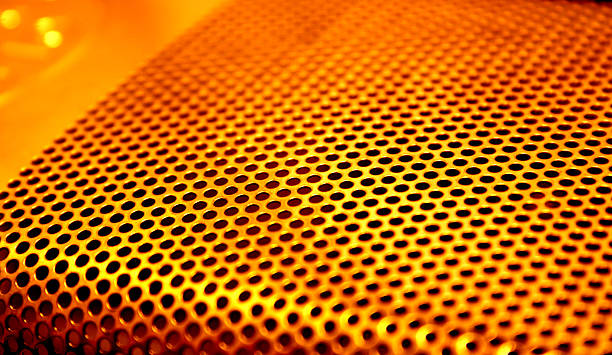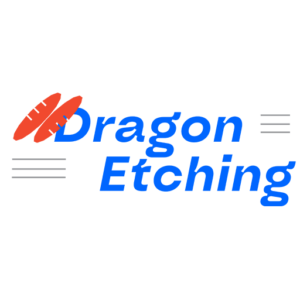We are a dedicated team of experts specializing in Photochemical Etching services and manufacturing. In this blog, we’ll introduce you to our state-of-the-art facilities, highlight the capabilities of our Photochemical Etching machine, delve into the metals we can etch, explore precision levels, and discuss why Dragon Etching stands out among the competition.
Learn about photochemical processes in one video
Our Cutting-Edge Facilities
At Dragon Etching, we take pride in our cutting-edge laboratory facilities. These facilities are equipped with the latest technology and machinery that allow us to achieve the highest standards of precision and efficiency in Photochemical Etching. Our team of skilled professionals operates in an environment that fosters innovation and excellence, ensuring that every project meets the most stringent quality standards.
Comprehensive Photochemical Etching Process
It’s widely recognized that to complete the entire etching process, a variety of equipment is required in addition to the photochemical etching machine. At Dragon Etching, we offer two different combinations of photochemical services, each tailored to specific needs:

Option 1: Using Dry Film what is dry film etching?
- Cleaning Link: The cleaning process is crucial to remove any contaminants, ensuring a clean surface for subsequent steps. It prepares the material for the photoresist application.
- Lamination Link: In the lamination step, a dry film photoresist is applied to the cleaned substrate. This photoresist acts as a protective layer during the etching process, defining the areas that will remain after etching.
- Exposure Link: During exposure, the substrate with the dry film photoresist undergoes a precise exposure to UV light. This step transfers the desired pattern onto the photoresist.
- Developing Link: In the developing process, the exposed photoresist is developed, leaving behind the patterned areas. Unexposed areas are removed, revealing the underlying material.
- Etching Link: Etching is where the actual material removal occurs. The substrate is exposed to etching chemicals, which selectively remove material according to the pattern defined by the photoresist.
- Stripping Link: After etching, the remaining dry film photoresist is removed, leaving you with the final etched product.
Option 2: Using Wet Film what is wet film etching?
- Cleaning Link: Similar to the dry film process, the cleaning step is essential to prepare the substrate by removing contaminants.
- Lamination Link: In this step, a wet film photoresist is applied to the substrate, forming a protective layer for subsequent processes.
- Exposure Link: The substrate with the wet film photoresist is exposed to UV light, creating the desired pattern on the photoresist.
- Developing Link: After exposure, the photoresist is developed, revealing the patterned areas on the substrate.
- Etching Link: Etching, as before, is where the material is selectively removed according to the pattern defined by the photoresist.
- Stripping Link: Finally, the remaining wet film photoresist is stripped away, leaving behind the finished etched product.

At Dragon Etching, we offer both dry and wet film processes to cater to a wide range of project requirements. Our state-of-the-art facilities and experienced team ensure that each step of the process is executed with precision and efficiency, resulting in high-quality products for our clients.
Dragon Etching’s Photochemical Etching Machine
Our flagship Photochemical Etching machine is a marvel of engineering. Here are some key features that set it apart:
- Unmatched Precision: The etching precision of our machine is an astonishing 0.018mm, enabling us to manufacture micro-sized components with unparalleled accuracy. This level of precision is a game-changer for industries that demand intricate designs and fine details.
- Enhanced Efficiency: Our Photochemical Etching machine automates the intricate and time-consuming process of removing copper from PCBs. It’s capable of handling large volumes of boards in a shorter time, significantly increasing production efficiency. This means quicker turnaround times for your PCB orders.
- Consistent Precision: The machine offers high accuracy and repeatability, ensuring consistent results and minimizing errors. It can achieve fine circuit traces and complex designs that may be challenging to accomplish manually.
- Reduced Production Time: With faster etching speeds and automated processes, our machine significantly reduces overall production time. This not only saves time but also optimizes resource utilization and improves profitability.
Metals Suitable for Photochemical Etching
While copper Photochemical Etching is the most common, our expertise extends to several other metals, including:
- Stainless Steel: Ideal for applications requiring corrosion resistance.
- Nickel Alloys: Suitable for high-temperature and corrosive environments.
- Aluminum: Perfect for lightweight designs and high-performance applications.
- Titanium: Known for its lightweight yet robust properties.
Learn more about photochemical etching materials

Unrivaled Precision
Our commitment to precision is unparalleled. Dragon Etching can achieve precision levels as fine as a few nanometers, making us the top choice for industries that demand the utmost precision in their projects. This level of accuracy opens up new possibilities for applications where precision is critical.
Why Choose Dragon Etching?
Dragon Etching stands out from other Photochemical Etching service providers in several key ways:
- In-House Machine Manufacturing: We are not just a service provider; we also manufacture Photochemical Etching machines. Click here to learn about the Photochemical Etching Equipment Selection Guide. This unique capability allows us to offer customized solutions, tailored to your specific needs. Whether you need our services or a customized DIV Photochemical Etching Machine, we have you covered.
- Advanced Laboratory Facilities: Our state-of-the-art laboratories are equipped with the latest machinery and technology, ensuring consistent and high-quality results for our clients.
- Rapid Turnaround: We understand the importance of timely project completion. Our streamlined processes enable us to offer some of the fastest turnaround times in the industry, ensuring your projects are completed efficiently and on schedule.
Exceptional Service Department Efficiency
Our service department operates at peak efficiency, capable of achieving a remarkable output of up to 200 square meters of copper etching in a single day. This exceptional efficiency ensures that we can handle large-scale projects without compromising on quality.
At Dragon Etching, precision, efficiency, and innovation are at the core of everything we do. Whether you require high-volume production or custom solutions, Dragon Etching is your trusted partner. Contact us today to experience the Dragon Etching difference firsthand.
How do I select a photochemical etching service company if I need to use photochemical etching brass for a project right now?
Experience and Expertise: Ensure that the company you choose has ample experience and expertise, particularly in dealing with brass. They should understand the characteristics of brass to effectively perform photochemical etching.
Equipment and Technology: Familiarize yourself with the equipment and technology the company uses. Modern equipment often provides higher precision and efficiency. Ensure that their equipment and technology align with the requirements of your project.
Quality Control: Inquire about the company’s quality control processes. They should have rigorous quality control standards to ensure your project meets the expected quality standards.
Project Scale: Consider the scale of your project. Some companies may be better suited for large production batches, while others specialize in small batches or custom projects. Choose a company that fits the scale of your project.
Delivery Time: Understand the company’s delivery times. If you have time constraints, ensure that the company can complete the project on schedule.
Cost and Budget: Lastly, consider costs and your budget. Discuss project costs with the company and ensure it aligns with your budget.


